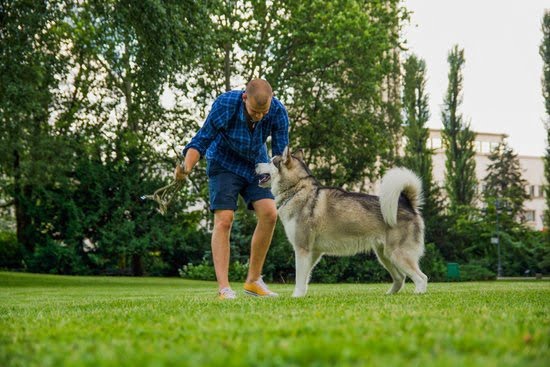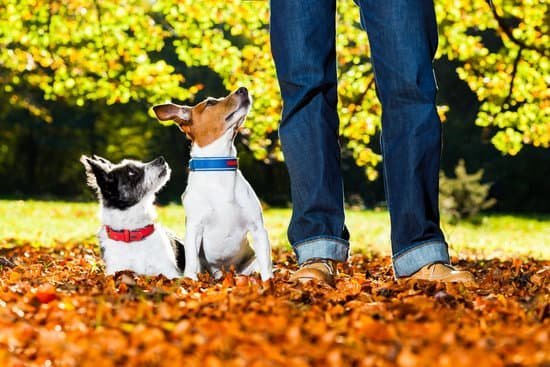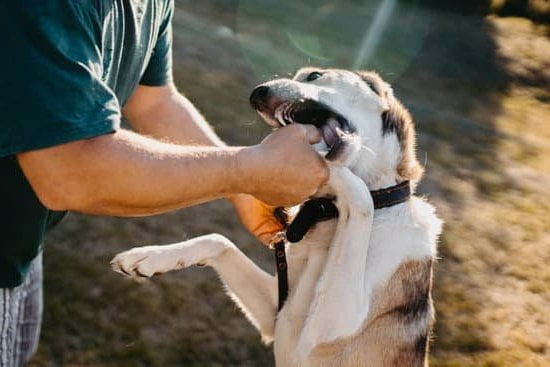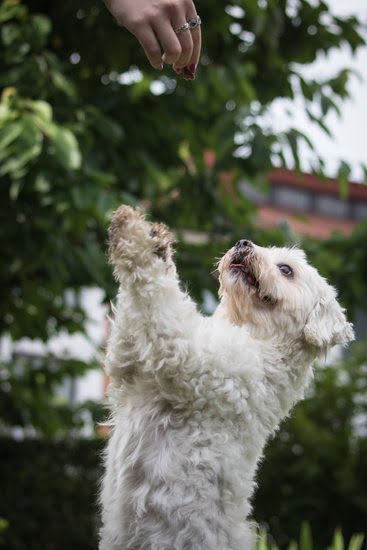Introduction
Training your dog at seven months old can be highly beneficial for both you and your dog. At this age, your pup should already have had their vaccinations and will be increasingly curious about their surroundings. This is the perfect time to introduce some basic obedience training to help them become a well-mannered, happy animal. Here are some of the benefits of having a trained, obedient dog at 7 months old:
1. Positive Reinforcement: Training helps to form a bond between you and your pup by reinforcing positive behaviors that make both of you happy, such as sit and stay commands.
2. Establish Good Habits Early: You’ll avoid having to deal with bad habits later on if you start teaching your puppy good behaviors early on in their lives. It is best to reward them for desired behaviors right away so they understand what makes mommy or daddy happy!
3. Improved Quality Of Life: Training establishes clear boundaries that will keep your pup safe and out of trouble . A better behaved pet means fewer visits to the vet, less anxiety for everyone, and happier walks with no surprises from jumping or leash yanking!
Understanding Your Dog’s Personality and Growth Patterns
At seven months, your pup is going through significant mental, social and physical developmental changes. During this time, it’s important to keep in mind that a dog’s personality begins to emerge and the bond between owner and pet strengthens. This can be an ideal age to begin specific training programs tailored to the individual needs of your pet. Many puppies at this age will be displaying active social behavior with other dogs and humans, making them excellent learners for commands such as sit, stay and come. While teaching these behaviors, take note of your pup’s overall temperament so you can be aware of any trouble spots as they arise or from occurrences during the games or activities used in training. Further teachable commands such as “leave it” can help reduce impulse control issues that some young dogs might have when around small children or pets in the home environment. Going on regular walks also act as great opportunities to provide your pup with obedience practice away from the house while bonding and enjoying nature together. Finally, remember that while your pup may start showing progress faster by seven months old due to their increased level of understanding; always provide reward-based positive reinforcement whenever possible!
Socializing and Introducing New People and Activities
At 7 months your dog should be introduced to a variety of people, places, and activities to help socialize them. This includes meeting different types of people such as children, other dogs, strangers in the street, or whatever else you can come up with. It’s a great time to also take them out for different walks on different streets so that they get used to being around new sights and smells. If possible, visit pet stores and puppy classes at this age as well so they have an opportunity to interact with other puppies their age. Additionally, depending on the breed it may be helpful to consider introducing basic commands such as “sit” or “down” at this age as these can become useful when properly training your pup.
Teaching Good Habits and Developing a Strong Bond
At seven months, a puppy is now fully mature and capable of learning more complex behaviors. It’s time to start moving away from basic commands such as ‘sit’, ‘stay’ and ‘come’ to ones that depend on the dog being in control of its own behavior. Teaching good habits, such as not jumping up or becoming overly excited, can help protect the dog from accidents or injury. Other important tasks include helping with house training and socialization; giving the dog an understanding of acceptable behavior when out in public with its owner.
Developing a strong bond with your dog is essential in order for them to respect and accept your instructions. Establishing rules, routines, and boundaries for the house will create consistency enabling the dog to feel secure. Learning activities like agility can be beneficial at this age, providing challenges for both the owner and pup to enjoy together. An active lifestyle encourages physical health along with ongoing mental stimulation which helps support overall cognitive development
Establishing Consistency and Setting Clear Boundaries
At seven months, dog training should involve establishing a consistent set of rules and boundaries. The pup should be expected to adhere to these boundaries all the time, not just when the trainer is present. This can be done through positive reinforcement and punishment when necessary, helping the pup understand what behaviors are and are not acceptable. This will help keep them safe and help them learn tricks more quickly. Consistency is key in training at this age; a pup that has one set of rules one day and different ones another is more likely to be confused.
At this point in their development, pups may also need guidance and supervision during off-leash activities so they do not disobey commands or run off after other animals or people. It’s important to remember that puppies rely heavily on their scent instincts so keep an eye out for anything that may trigger their curiosity. Learning how to properly recall a pup from any potential situation without scaring them is critical; practice the recall command over and over until your pup knows it well before taking them outside with less supervision. Additionally, commands such as ‘sit’, ‘down’ and ‘stay’ should be taught to ensure safe outdoors activities and interactions with others.
Training for Respect and Discipline
At seven months, your dog should have a basic foundation of respect and discipline established. This includes commands like “sit”, “stay”, “come”, and “leave it”. Adding a cue for “no” or “off” can be helpful for when you need your dog to stop jumping on people or furniture. Also focus on teaching your pet to walk nicely on the leash. Do this through positive reinforcement such as giving treats when your pup walks at heel and rewarding calm behaviors when she encounters strange dogs or people. In addition to obedience training and behavioral correction, establish a consistent schedule with regular mealtimes, outdoor time and naps. This helps keep routines rooted in calm rather than chaos. Finally, begin working on refining cues like rolling over or shaking hands – fun tricks that help reinforce commands.
Mental and Physical Challenges/Activities
At seven months, a dog is developmentally ready for more complex mental and physical activities. It’s important to keep training sessions short at this age—no more than 15 minutes at a time. For mental stimulation, provide challenging puzzles and activities that will stimulate the mind and encourage problem solving skills such as hide-and-seek with small treats or exploring scents by tracking objects around the house. Physical activities can be fetching small toys, agility courses with ramps or tunnels, teaching your pup to swim or hill sprints or interval runs during walks.
Common Mistakes and How to Avoid Them
One of the most common mistakes made when training a dog over 7 months is confusing the pup with inconsistent commands- meaning using different words, tones, or hand signals to teach it the same command. To avoid this problem, choose one simple phrase and use it each time you give a particular command. Additionally, always use the same body language and verbal cue in order for your pup to learn what you expect from them. Also, it can be tempting to provide treats each time your dog obeys you; however, by doing this they may start to associate their treat with that particular command while ignoring other commands. Instead save treats for when they really excel at following a command or demonstrate successful behavior as occasional rewards will incentivize them further rather than numbing them down.
Additionally, don’t forget that pups may still not be completely housebroken when older- for example if there are changes in their schedule or environment, it’s important to continue with potty training until they fully grasp these principles. Finally, never use physical punishment or negative reinforcement as doings so will only lead to fear and anxiety in your dog and build mistrust between yourself and your pup- instead opt for positive reinforcement such as praising them for good behavior.
Conclusion
After seven months of training your dog, you are likely to now have a pet that is far more responsive and much more fun for everyone. Dog training should always be about rewarding good behavior, as well as, redirecting bad behavior. During the 7-month timeframe you’ve likely seen major improvements in your dog’s overall attitude and outlook with regard to socialization and obedience commands. In addition, you’ll have developed an even closer bond with your pup which is only likely to deepen over time now that the two of you understand each other better thanks to this significant investment into the lifetime relationship. Your diligence in consistently reinforcing concepts will pay off not only in how your dog behaves but also in how she interacts with those who may come across her paths. When it comes to instilling proper behavior by teaching obedience commands, complimented by suitable consequences where appropriate; the transformation in your canine family member can be nothing short of remarkable. Now that you have reached the culmination of 7 months of training regimen, you undoubtedly deserve to reap all the rewards associated with such hard work. Congratulations on a job well done!

Welcome to the blog! I am a professional dog trainer and have been working with dogs for many years. In this blog, I will be discussing various topics related to dog training, including tips, tricks, and advice. I hope you find this information helpful and informative. Thanks for reading!





